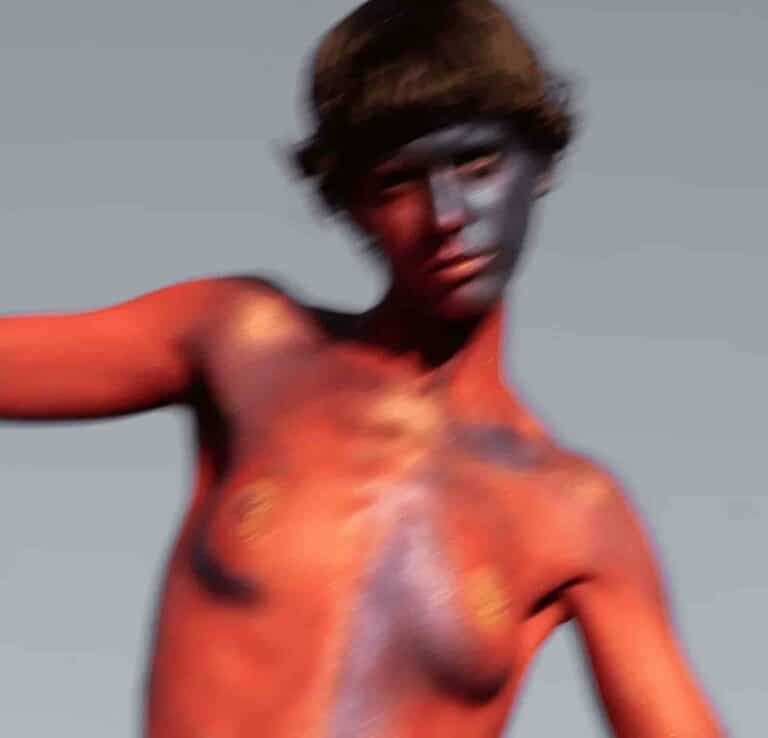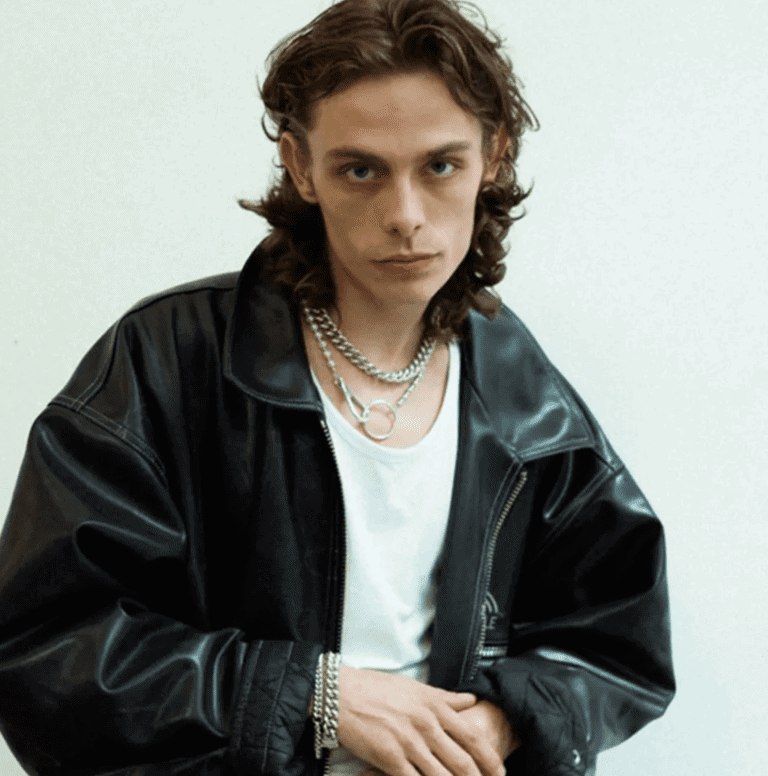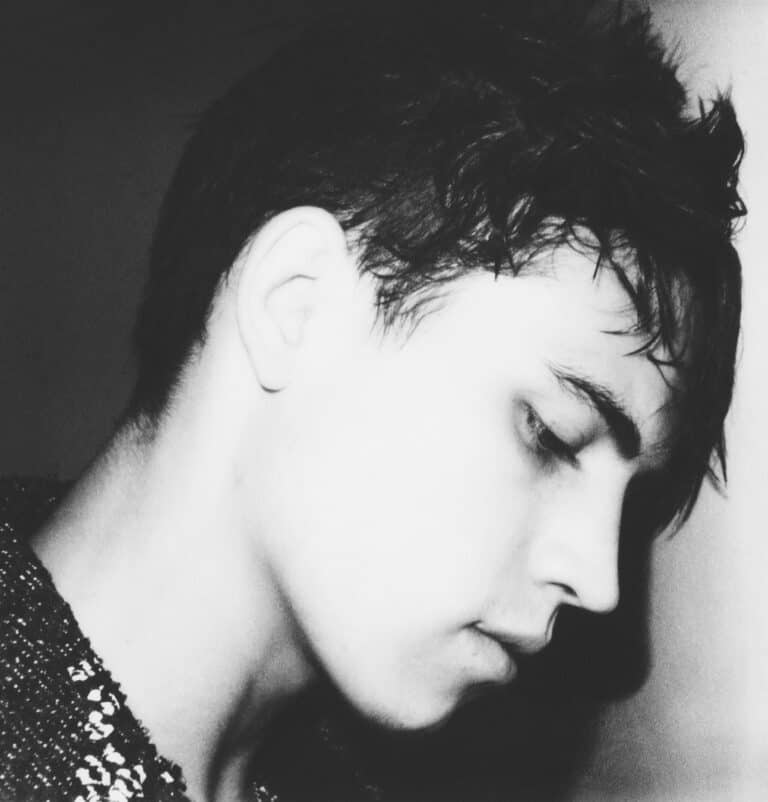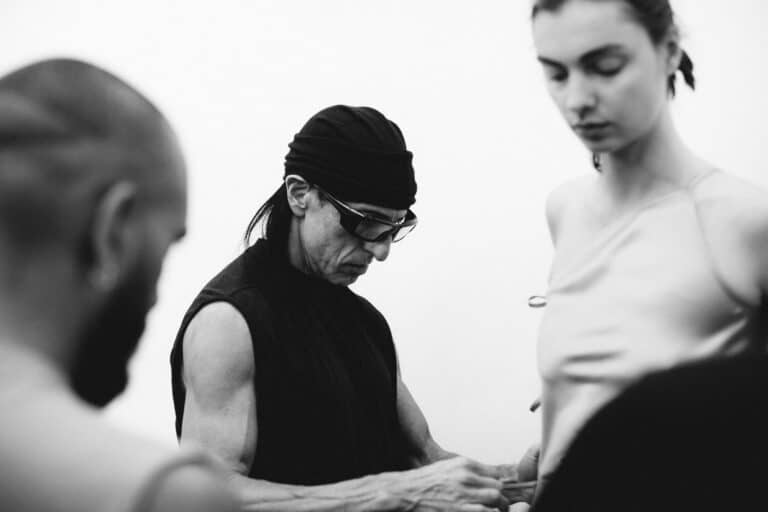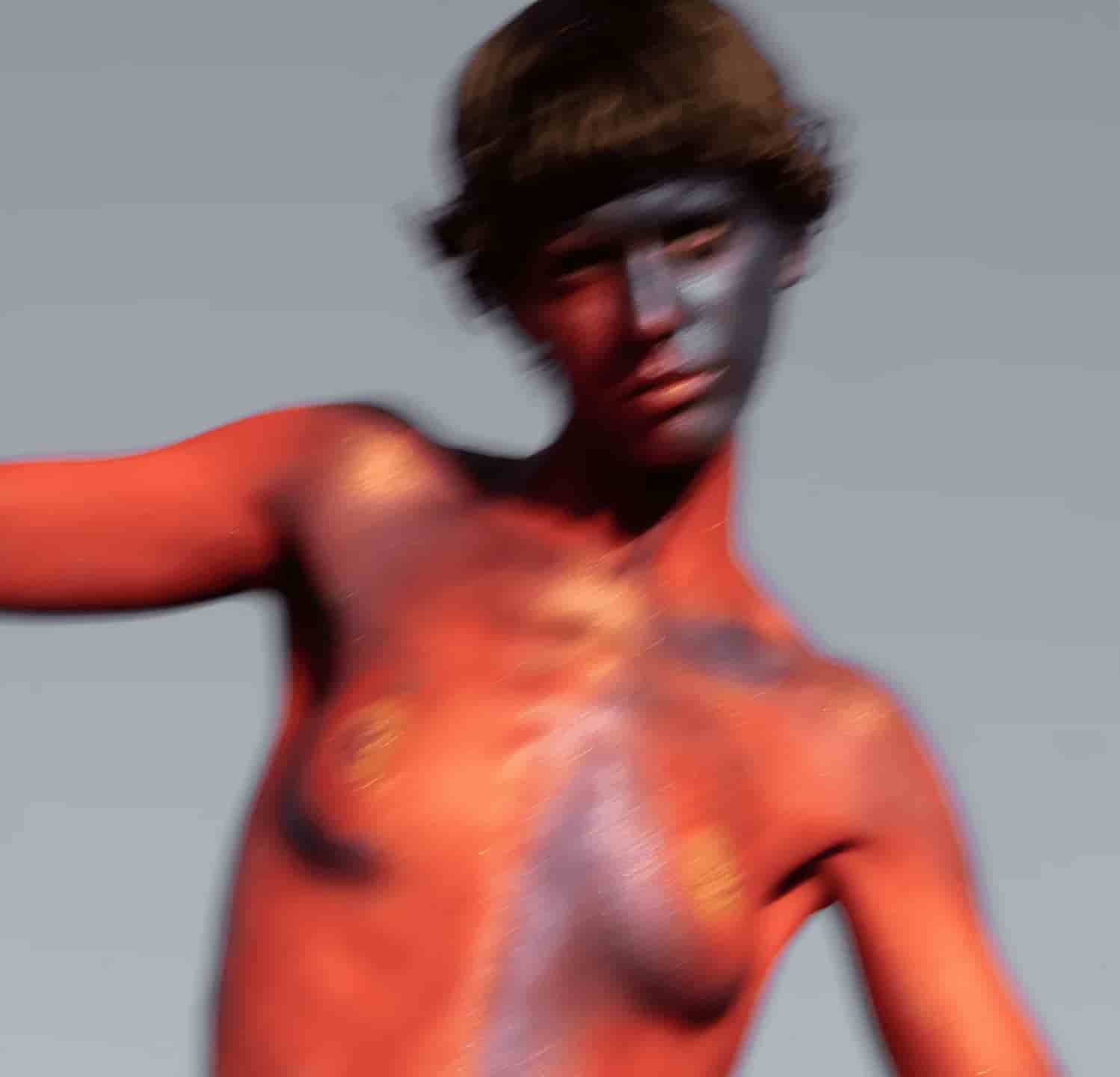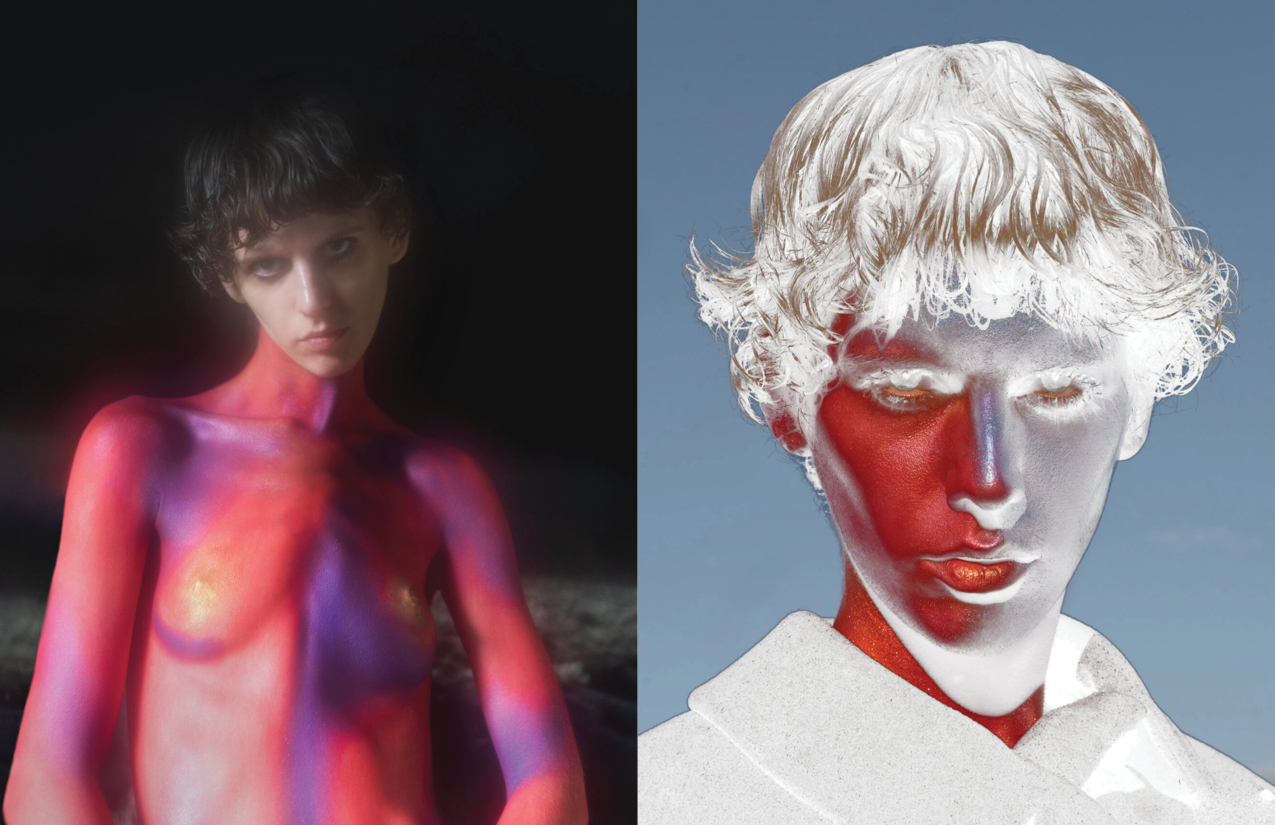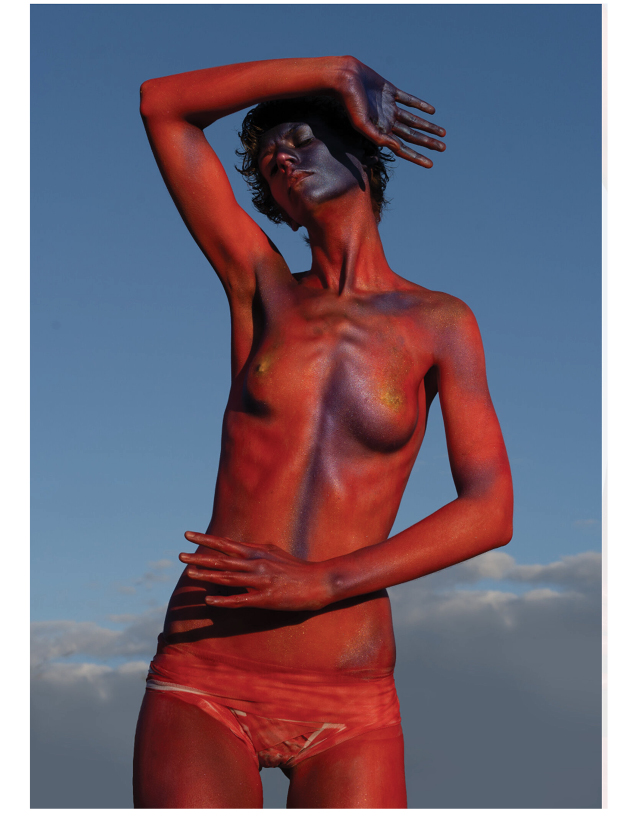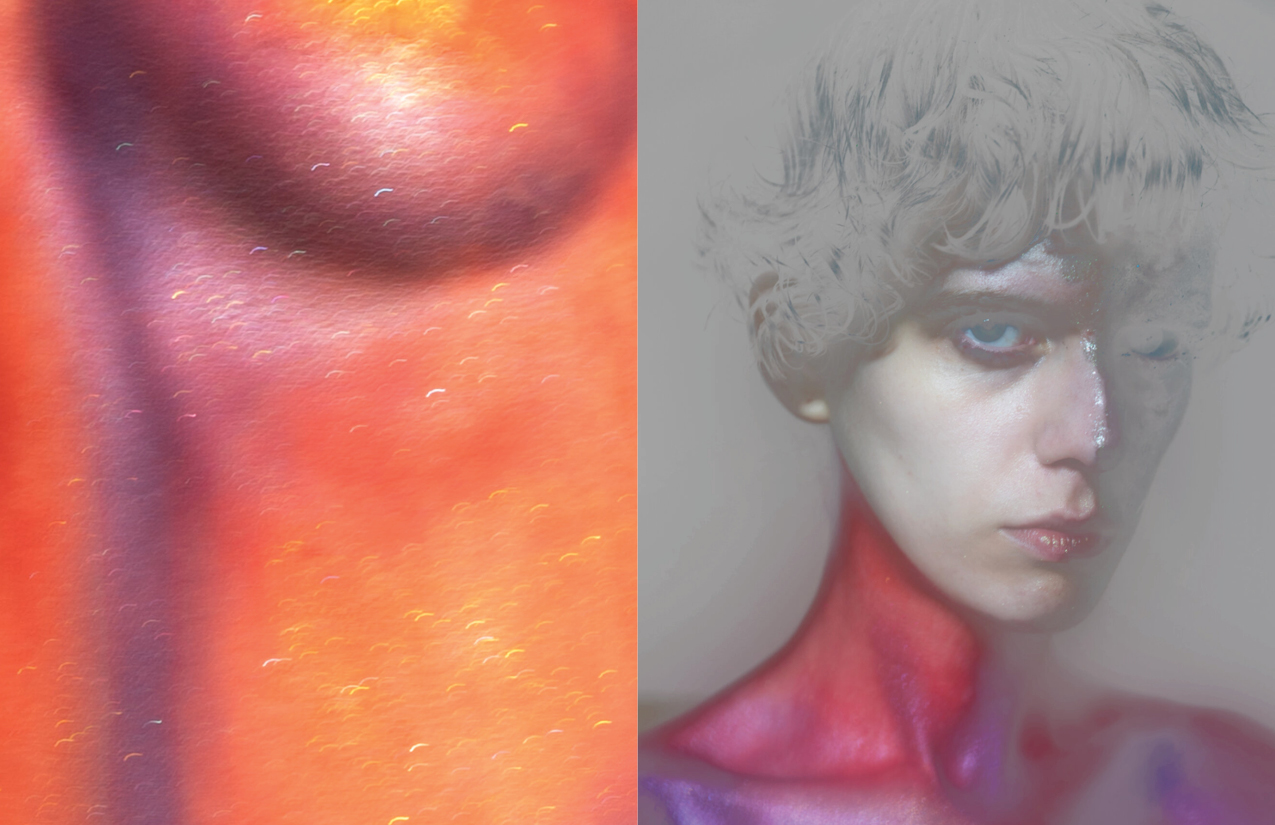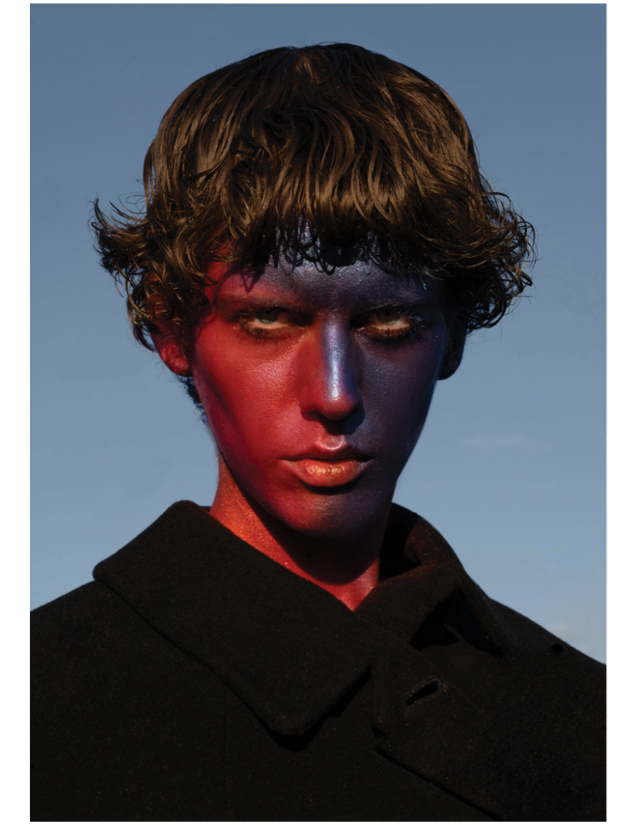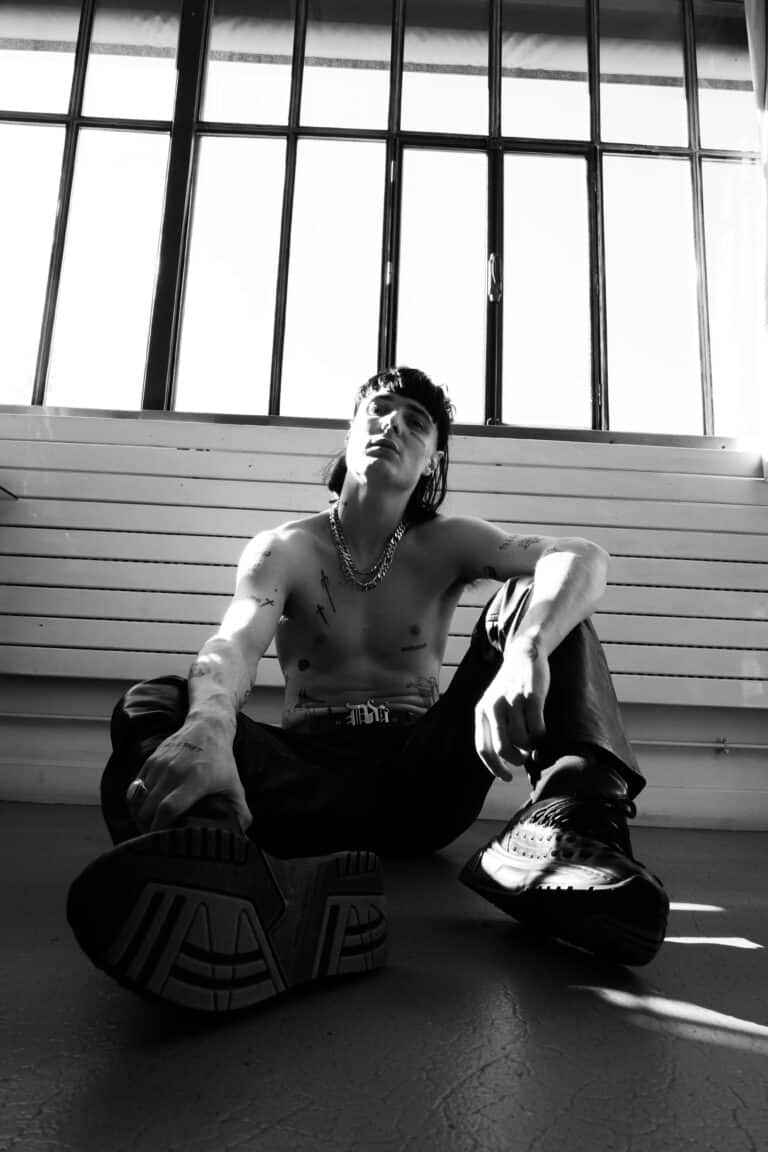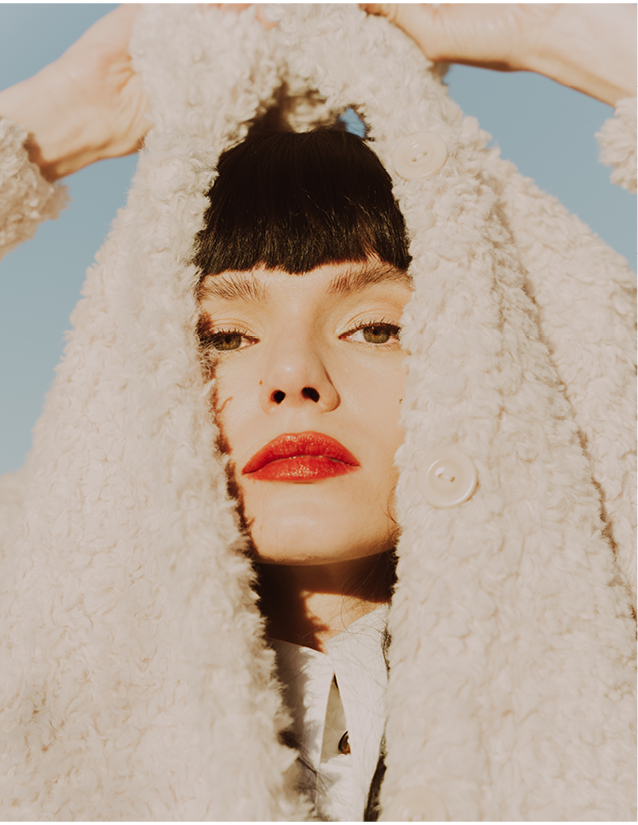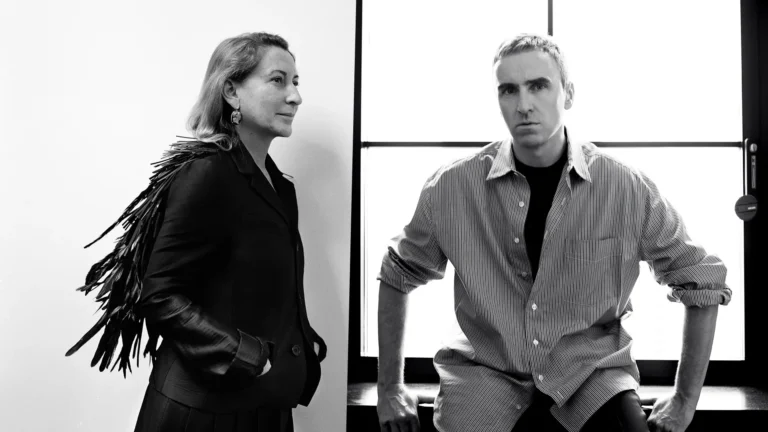Artistic Director Kris Van Assche collaborates with video director Antoine Asseraf and creative consultant Yoann Lemoine (aka Woodkid) on a virtual show experience devoted to the figurative act of crossing borders. The colour! The cut! The fact that it’s not a tracksuit! There is so little not to love about the looks. Even the chunky Derby shoes match the oil-on-water effect and for that attention to detail, Mr Van Assche, we salute you. Set the tone of things to come by wearing this for your first day back at the office – your colleagues will thank you for the shot of sartorial energy it will provide, and, if not, screw ’em, you look great! If you’re still not quite ready to go the whole hog with lapels and cuffs etc, you could do worse than opt for something like this Mao-style worker suit cut from wool and cashmere in the colour of depleted coffee grounds.
The chunky nursery necklace and platform shoes add a pleasingly futuristic effect we advise you lean in to, It’s still cold, which means that despite the fact that pub gardens reopen next week, you’re going to need to focus on smart-yet-stylish insulation for the foreseeable. Enter, Van Assche’s excellent trans-seasonal patinated leather bomber jacket, which you can wear right now and in the evenings when the weather gets warmer. Oh, and the degrade wool bucket hat and sweater will provide a fun, extra layer of protection until the mercury begins rising again. One more round?
A modular trench coat is going to be your best friend for the next few months and you’ll be able to wear this pipe-seamed option, finished in on-trend check, all the way through summer and beyond. Team with a T-shirt as the weather warms up and with knitwear when things cool down again. The weatherproof element will also prove useful with all the outdoor living we’re set to be doing in the foreseeable. This slouchy, painterly two-piece is the perfect look to take you from your sofa to the office in the next few months. Low-key and chic in that specifically Parisian way, yet surprisingly adaptable – given that the muted shades will work with most others – wear together or as separates and own every room you walk into. Be bold, man! Now is the moment.
Artistic Direction by Kris Van Assche in collaboration with: Antoine Asseraf. Video Direction by Olivier Casamayou. Choreography by Etienne Russo. Show Design by Villa Eugénie. Production by The Stimuleye. Video Production by Frederic Sanchez. Sound Design by Yoann Lemoine. Creative Consultant assisted by Ronan Querrec. Styling by Mauricio Nardi. Casting by Piergiorgio Del Moro. Make-up by Satoko Watanabe. Hair by Joseph Pujalte. Artwork by Lev Khesin. Contemporary Artist Music ‘Behind the wheel’ (Martin Gore) © EMI Music Publishing Ltd.






